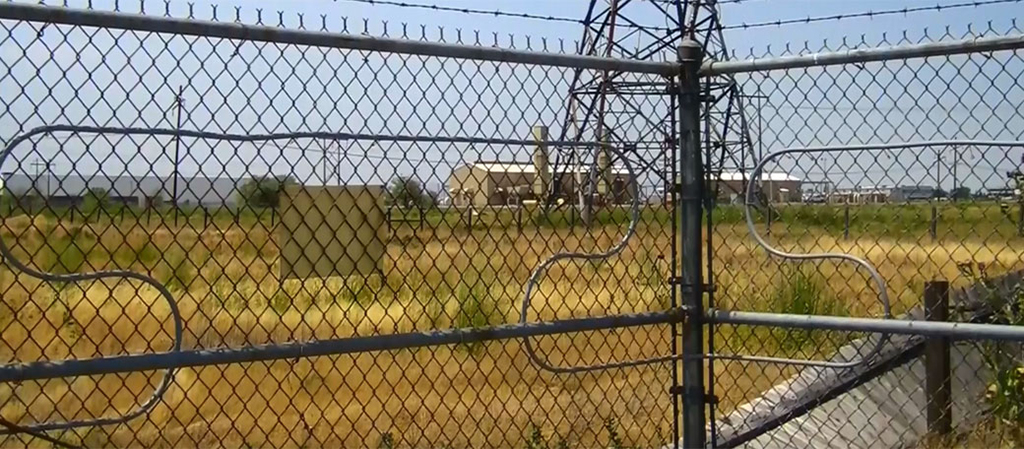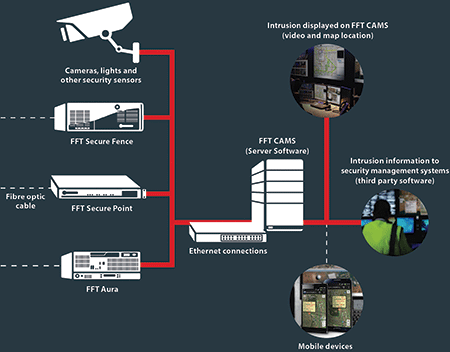The Ultimate Guide to Fiber Optic Security Systems for Your Business
In an age where safety issues are paramount for businesses, recognizing the details of fiber optic modern technology can be transformative. This overview details exactly how integrating fiber optic security systems not just enhances information security yet likewise supplies advantages like resistance to disturbance and real-time tracking capacities.
Comprehending Fiber Optic Modern Technology

The core of a fiber optic cable television includes a thin glass or plastic facility, bordered by a cladding layer that shows light back right into the core. fiber optic security system. This design makes certain minimal loss of signal toughness, even over substantial ranges. There are two key sorts of fiber optic cords: single-mode and multi-mode. Single-mode fibers are developed for long-distance transmission, while multi-mode fibers are ideal for shorter ranges, usually made use of within buildings.
Fiber optics are not just much faster but also a lot more safe and secure than conventional electrical wiring. Their integral resistance to electro-magnetic interference and the difficulty of taking advantage of the signal without discovery make them a favored selection for businesses prioritizing data integrity and safety. As companies significantly count on secure and efficient communication systems, comprehending fiber optic innovation ends up being crucial for educated decision-making.
Key Benefits of Fiber Optic Security
When thinking about safety and security choices for a service, the advantages of fiber optic systems are especially compelling. Fiber optic modern technology supplies exceptional information transmission rates and data transfer capability, making it optimal for managing high-resolution video feeds from surveillance electronic cameras. This capacity makes sure that safety and security personnel obtain real-time information, improving overall feedback times to possible safety and security risks.
Moreover, fiber optic cords are inherently resistant to electro-magnetic interference, which can compromise the honesty of conventional copper-based systems. This resistance ensures that the information transmitted continues to be safe and continuous, providing a much more dependable protection facilities. Additionally, optical fiber are less at risk to physical damage, as they are made from glass instead than metal, reducing upkeep prices and downtime.
One more significant advantage is the increased scalability of fiber optic systems. As organization requirements advance, fiber networks can be quickly expanded to fit additional safety devices without considerable overhauls to the existing infrastructure. Fiber optic systems offer improved cybersecurity functions, including file encryption capacities that safeguard delicate information from unapproved access. Collectively, these benefits make fiber optic safety systems a durable choice for services looking for to boost their security steps.
Installment Refine and Factors To Consider
Taking into consideration the intricacies entailed, the setup procedure of fiber optic safety systems needs cautious planning and execution. The first action entails a detailed site evaluation to identify optimal locations for cabling and tools. This analysis must think about environmental factors, existing infrastructure, and possible susceptabilities.

In addition, the setup should abide by local building ordinance and market requirements. This may include collaborating with different stakeholders such as building managers, IT groups, and safety workers to guarantee seamless assimilation with existing systems.
Post-installation, strenuous testing is required to verify system efficiency and determine any issues that might occur. hop over to here By prioritizing these see this here factors to consider during the installation procedure, companies can ensure a durable and efficient fiber optic security system that satisfies their specific protection requirements.
Latest Technologies in Fiber Optic Protection
Recent innovations in fiber optic innovation have actually substantially enhanced the capacities of safety and security systems for organizations. One of one of the most notable advancements is the integration of fiber optic sensing units that can detect resonances and intrusions along the boundary of a center. These sensors supply real-time surveillance, enabling fast response to prospective violations.
Additionally, the advancement of dispersed fiber optic sensing innovation enables for the continual monitoring of big locations with a single fiber cable television. This technique not just reduces setup expenses yet additionally improves the reliability of checking systems by removing the need for multiple, separate sensors.
Moreover, innovations in multiplexing techniques have enabled companies to transfer huge quantities of information over fiber optic networks, boosting the capacities of video clip security systems. High-def video clip feeds can currently be sent out over lengthy ranges without loss of top quality, ensuring that security personnel have access to clear and workable details.
Finally, the usage of expert system (AI) combined with fiber optic systems is reinventing danger discovery. AI algorithms can evaluate data from pop over to this site fiber optic networks to identify unusual patterns or actions, permitting aggressive safety procedures. These advancements collectively represent a significant jump onward in fiber optic safety innovation.
Choosing the Right System for Your Business
Picking the ideal fiber optic safety system for your company is essential for ensuring optimum security and satisfaction. To make an informed selection, examine your particular security demands, thinking about factors such as the dimension of your premises, the nature of your procedures, and prospective vulnerabilities.
Begin by reviewing the degree of safety and security called for; as an example, risky atmospheres may necessitate sophisticated systems with integrated security and intrusion discovery capabilities. Next off, think about scalability; as your organization grows, your protection system ought to can broadening to suit enhanced needs without significant overhauls.
In addition, investigate the dependability and performance of different systems. Try to find companies with well-known reputations and client testimonies that attest to their service high quality. It's likewise suggested to inquire about the technology's compatibility with existing infrastructure, making sure a smooth assimilation procedure.
Verdict
In conclusion, fiber optic safety and security systems provide a robust option for improving organization protection frameworks. The assimilation of high-speed information transmission, resistance to electro-magnetic disturbance, and progressed surveillance capacities dramatically boosts total protection (fiber optic security system). By recognizing the modern technology, identifying its advantages, and taking into consideration the installment procedure, companies can make educated decisions. The most up to date technologies better boost the efficiency of these systems, guaranteeing that companies remain safe and secure and versatile in an ever-evolving risk landscape.